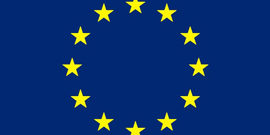As the markets have calmed over the past months, the rumours of a collapsing Euro became only whispers. However the Euro once again appears to become more fragile, with recent turmoil in the Spanish markets and money being moved across borders in all regions.
Despite the markets calming, the trend over the past few months has been for investors to pull out euros from the struggling countries and deposit them in ‘safe haven’ banks, illustrating a increasing concern that countries may scrap the euro leaving investors with devalued country-denomination money.
In an attempt to quantify the outflow of Euro currency from fragile South European economies experts have looked at the Euro net movements by considering cross border claims between Eurozone countries. A country’s accounts are balanced when money is moved from one country to another by the receiving banks lending the offset amount to the source country – when a depositor moves money between countries, the source country bank owes that money to the receiving country bank. Experts have used these accounts to calculate ‘capital flight’.
This research has shown that money is leaching out of Italy, Spain, Ireland and Greece and into Germany, Luxembourg and the Netherlands in particular. During 2010 and 2011 this movement was higher than seen prior to the financial crisis but maintained a steady balance at around a total of €200 billion owed by Italy, Spain and Ireland, and received by Germany, Luxembourg and the Netherlands. The last seven months however have seen a marked increase in movement with highs of just under €600 billion owed/received since the beginning of 2012.
This seven month period shows the debt double in size, compared to the previous 17 months. Germany, Luxembourg and the Netherlands have combined loans of €789 billion euros – the highest on record.







